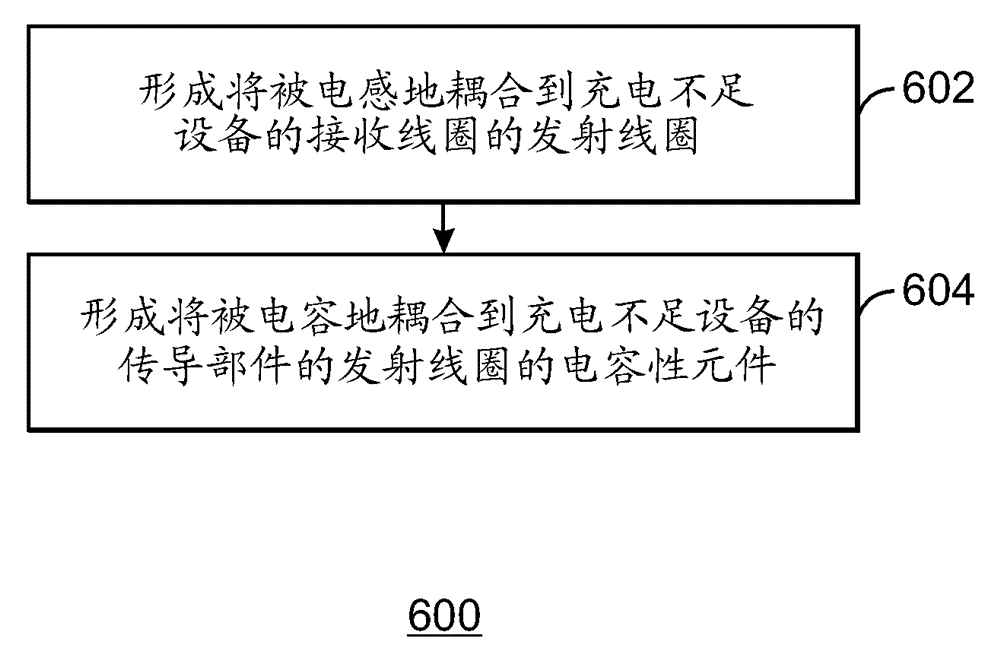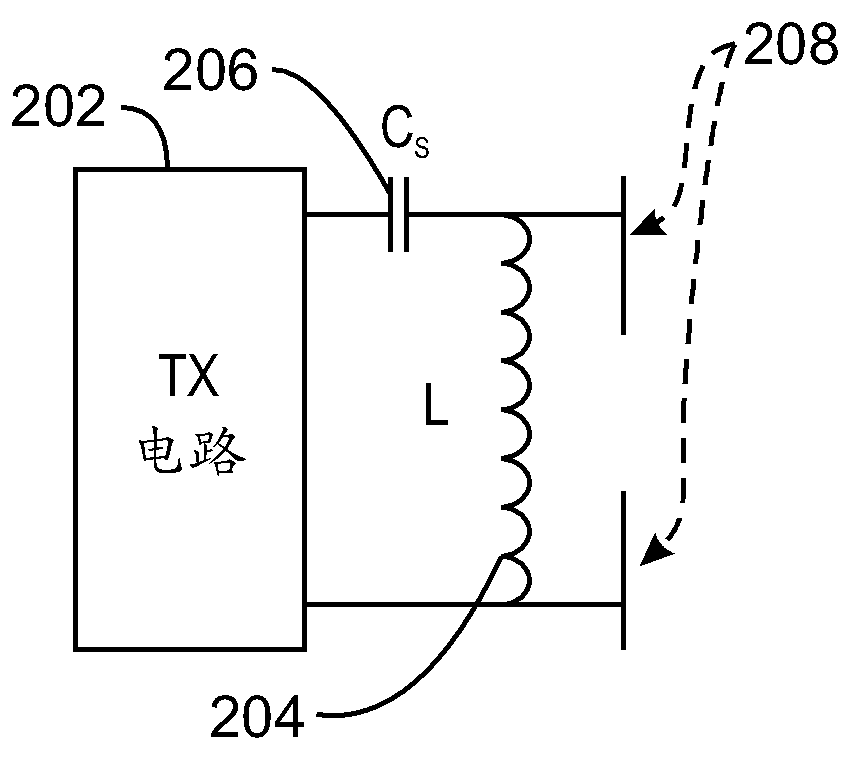Capacitive element coupling in wireless power
一种电容性元件、无线充电的技术,应用在电气元件、电路、电路装置等方向,能够解决低功率传递效率等问题
- Summary
- Abstract
- Description
- Claims
- Application Information
AI Technical Summary
Problems solved by technology
Method used
Image
Examples
example 1
[0055] The techniques described herein generally relate to wireless transmission and the creation of capacitive devices, such as capacitive elements, to couple with conductive components of under-charged devices (DUCs). For example, a DUC may have various conductive components, such as metal in the DUC's frame, that may decouple the intended inductive coupling between the DUC's transmit and receive coils.
example 2
[0057] The techniques described herein may include a wireless charging component that includes a transmit coil and a capacitive device, such as a capacitive element to be coupled to a conductive component of an under-charged device (DUC). While the transmit coil will be inductively coupled to the DUC's receive coil, the capacitive device accommodates for inductive coupling disruption of the DUC's conductive component(s).
example 3
[0059] The techniques described herein may include wireless power receiving units for under-charged devices (DUCs). The receiving unit may include a receiving coil to be inductively coupled to the transmitting coil of the power transmitting unit. The receiving unit may comprise conductive components, such as a metal frame, or other computational components of the DUC to be capacitively coupled to the capacitive elements of the transmitting coil. The capacitive coupling between the conductive component and the capacitive element can be adjusted for breaks in the inductive coupling between the receive coil and the transmit coil that might otherwise occur due to the conductive element of the DUC.
PUM
 Login to View More
Login to View More Abstract
Description
Claims
Application Information
 Login to View More
Login to View More - R&D
- Intellectual Property
- Life Sciences
- Materials
- Tech Scout
- Unparalleled Data Quality
- Higher Quality Content
- 60% Fewer Hallucinations
Browse by: Latest US Patents, China's latest patents, Technical Efficacy Thesaurus, Application Domain, Technology Topic, Popular Technical Reports.
© 2025 PatSnap. All rights reserved.Legal|Privacy policy|Modern Slavery Act Transparency Statement|Sitemap|About US| Contact US: help@patsnap.com



